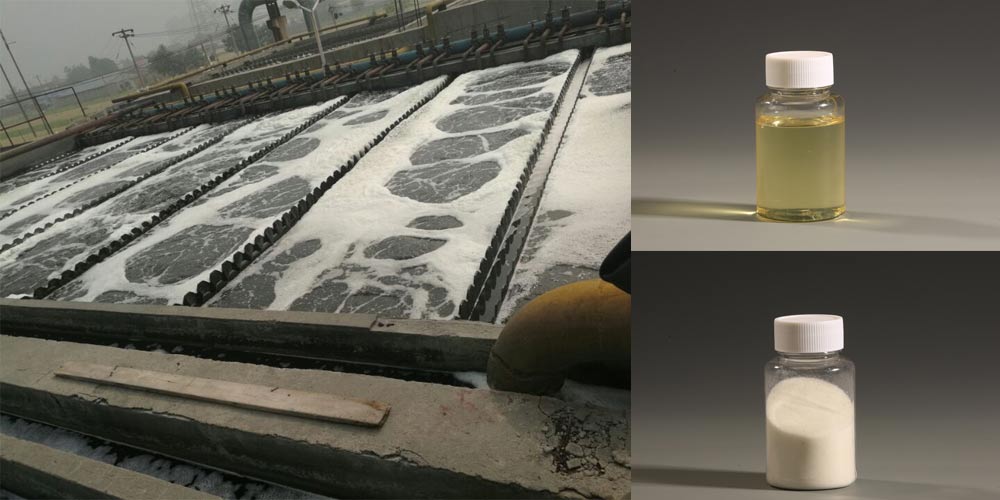In phekolo ea metsi a litšila ea indasteri, ho tlosoa ha lintho tse tiileng tse emisitsoeng ke sehokelo sa bohlokoa. Sena ha se thuse feela ho ntlafatsa boleng ba metsi, hape se fokotsa ho senyeha ha lisebelisoa le ho koala. Hona joale, mekhoa ea ho tlosa lintho tse tiileng tse emisitsoeng haholo-holo li kenyelletsa sedimentation, filtration, flotation le flocculation. Har'a bona, mokhoa oa flocculation o sebelisoa haholo ka lebaka la ts'ebetso ea oona e phahameng le moruo. Ka mokhoa ona, polymer e bitsoang PolyDADMAC e phetha karolo ea bohlokoa.
PolyDADMAC, eo lebitso la eona le felletseng e leng Poly diallyl dimethyl ammonium chloride, ke polymer e phahameng ea molek'hule. E thehiloe haholo ke polymerizing diallyldimethylammonium chloride monomer ka ketane ea kholo ea polymerization. Karabelo ena ea polymerization hangata e etsoa tlasa catalysis ea acid kapa letsoai, 'me ho ka fumanoa polymer ea sebopeho sa linear. Hangata ke mokelikeli o mosehla kapa o tšoeu ho ea ho phofo e mosehla kapa granules. E na le solubility e ntle 'me e ka qhalakanngoa ka ho lekana ka tharollo ea metsi.
PolyDADMACe na le tefiso e phahameng haholo 'me hangata e sebetsa joalo ka polima ea cationic. Sena se bolela hore e ka adsorb ka mpeng qoso fanyehiloe solids le colloidal particles ka metsing ho etsa flocs khōlō, ka tsela eo ho finyella ho tlosoa ka katleho ea solids emisitswe. Hangata PolyDADMAC e sebelisoa e le flocculant le coagulant 'me e sebelisoa haholo libakeng tse fapaneng tsa phekolo ea metsi, ho kenyeletsoa ho hloekisa metsi a litšila a indasteri le ho hloekisa likhoerekhoere tsa litoropo. E ka etsa ka potlako li-flocs tse kholo le tse teteaneng metsing a litšila 'me ka katleho ea tlosa lintho tse tiileng tse emisitsoeng, li-ion tsa tšepe tse boima le litšila tse phelang.
Ha ho phekoloa metsi a litšila a tsoang ho pulp le lifensetere tsa pampiri, mokhoa oa ts'ebetso oa PolyDADMAC o bontšoa haholo ka lintlha tse latelang:

Charge neutralization: Hobane PolyDADMAC e na le tefiso e phahameng ea density, e ka potlakela ho adsorb holim'a lintho tse tiileng tse emisitsoeng hampe le likaroloana tsa colloidal, e leng se etsang hore ba lahleheloe ke botsitso ka ho se nke lehlakore, ebe o kopanya ho etsa lihlopha tsa likaroloana tse kholo.

Ketso ea ho fiela: Ha floc e ntse e etsoa, e tla hula lintho tse tiileng tse emisitsoeng le likaroloana tsa colloidal ka har'a metsi a litšila ka har'a floc, ho fihlela karohano e tiileng ea metsi ka ketso ea 'mele.

Net-capture effect: Li-polymers tse phahameng tsa limolek'hule li ka etsa sebopeho sa marang-rang se teteaneng, ho tšoara lintho tse tiileng le likaroloana tsa colloidal ho eona joaloka letlooa la ho tšoasa litlhapi, kahoo li finyella karohano e sebetsang hantle.

Ha ho bapisoa le mekhoa e meng ea ho hloekisa metsi a litšila, ho sebelisa PolyDADMAC ho phekola metsi a litšila a makhasi le pampiri ho na le melemo e latelang:

Tlhōrō e phahameng ea tefiso: Tšebeliso e phahameng ea tefiso ea PolyDADMAC e etsa hore e khone ho monya ka katleho lintho tse tiileng tse emisitsoeng le likaroloana tsa colloidal, ho ntlafatsa katleho ea phekolo.

Ho ikamahanya le maemo ho matla: PolyDADMAC e na le litlamorao tse ntle tsa kalafo mefuteng e fapaneng ea metsi a litšila le pampiri mme ha e amehe ke ho fetoha ha boleng ba metsi.

Ho sebetsa hantle haholo le tšebeliso e tlase: Ho sebelisa PolyDADMAC joalo kaFlocculant'me coagulant e ka fokotsa haholo tekanyo ea lik'hemik'hale, ha e ntse e ntlafatsa katleho ea phekolo le ho fokotsa litšenyehelo tsa ts'ebetso.

E na le botsoalle tikolohong: PolyDADMAC ke polima ea cationic. Floc e hlahisoang ka mor'a ho sebelisoa ha e senyehe habonolo hore e be lintho tse kotsi 'me e na le botsoalle ba tikoloho.
Qetellong, PolyDADMAC, joalo ka aPolymer e phahameng ea molek'hule, e na le melemo ea ts'ebetso e phahameng, tšebeliso e tlaase, le botsoalle ba tikoloho, 'me e phetha karolo ea bohlokoa ho hloekiseng metsi a litšila a tsoang makhasi le lifemeng tsa pampiri. Nakong eo mokhoa oa ts'ireletso ea tikoloho o leng thata ho hanela, PolyDADMAC ke sehlahisoa se tummeng sa lik'hemik'hale se kopanang le litšobotsi tsa lihlahisoa tsa tikoloho.
Nako ea poso: Sep-12-2024


